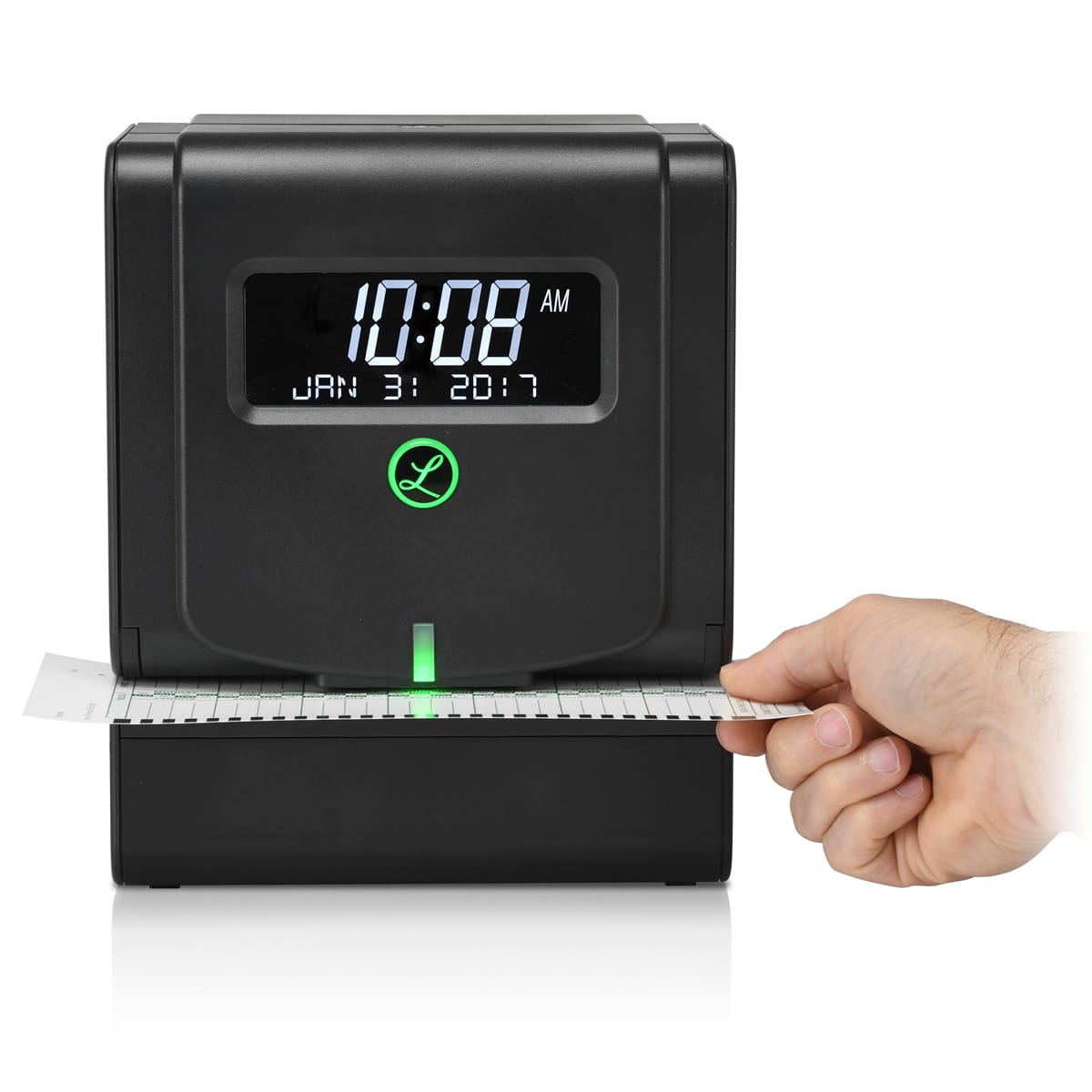Commentary & Opinion
Workforce time clocks keep punching away. Thanks, Coldplay
By Rick Bell
Feb. 18, 2020
My stove and kitchen radio decided to simultaneously conduct a household appliance assault, which triggered a mini-obsession with clocks.
When I set the timer on my stove, the time of day on the clock disappeared, which for some reason bothered me to no end. Already irritated, the annoying Coldplay song “Clocks” blared from the radio.
Nice. Now I don’t know what time it is, and I have earworm like “It’s a Small World” or “Viva la Vida” (ugh; Coldplay again), bobbling around my noggin. But then, would “Rock Around the Clock” have changed anything? Jim Croce crooning “Time in a Bottle”? Maybe it was just my time. Or that time of day. Whenever, wherever, I guess.
Unfortunately my fixation carried over to the next morning.
As I walked past a city water department crew hovering over a trench laying a water main, my time-sensitive brain set me pondering: Do these guys queue up at the crack of dawn, pull their paper time card off of a wall-bound time card rack, punch in on an old-fashioned workforce time clock and then pop it back in the rack before trudging out to a company rig and rambling off to the job site?
As I scurried to catch the train I drifted back to a time when I punched in and out on a workforce time clock for my dad as a plumber’s apprentice and again two summers later on his buddy’s road construction crew.
I got to wondering … what companies still use time clocks? After all, we are in an age where technology makes clocking in and out just an app away on our phones. So naturally, to satisfy my clock-obsessed curiosity, I googled time clocks.
Also read: Solving the concern over clean time clocks with a mobile solution
Do workforce time clocks still exist? Boy howdy, do they!
I was pleased to discover that there are several companies that still manufacture and sell the old-style workforce time clocks. I was particularly taken by the story behind Lathem Time Corp. The Atlanta-based manufacturer recently celebrated its 100th anniversary, and their company history page reads like the opening line straight out of a college class in Southern literature.
“In 1919, when George Lathem and his son, Louie P. Lathem began selling time clocks, the father and son sales team traveled by train throughout the Southeast, getting off at the whistle-stops of small towns and looking for the telltale smokestacks of local factories … .”
Which makes me want to add, “The sulphur burned their eyes as they strode toward the block-long red-brick building … ” OK, OK, snap back to 2020. Well, sort of.

As many organizations move toward cloud-based, mobile time-and-attendance software, I asked Lance Whipple, Lathem’s vice president of sales and marketing, about the viability of using workforce time clocks of a bygone era.
Whipple assured me that plenty of punch clocks are still in use.
“There are likely a couple hundred thousand Lathem punch clocks still in use daily, and many more when you add in competitive products,” Whipple said. “We’ve sold millions of time clocks to small businesses in our history.”
Punch clocks remain popular with small businesses, he added, and when you consider business needs, workforce time clocks make sense. Sure, we can romanticize their use in the farms and smoke-belching factories of yesteryear, but time clocks are simple to use and as reliable as sweet tea on a steamy Southern summer day.
“As much as we love time clocks, it’s not a sexy or exciting purchase for most small businesses,” Whipple said. “It serves a utilitarian purpose. The low cost of ownership is key in the decision making process. A small business can purchase a punch clock for a few hundred dollars, have it up and running in less than 10 minutes and it will provide many years of reliable service,” he said.
So reliable, in fact, that Lathem has heard from customers with workforce time clocks they made more than 50 years ago.
And time clocks require virtually no training, Whipple said.
“Some small businesses are reluctant to move to more complex technology until they grow to a point where manual time tracking is too much to handle easily.”
Although workforce time clocks are used in primarily blue-collar work environments, Whipple said the size of an organization typically will dictate what type of time and attendance function is in place.
“The smaller the business, the more likely they are to select a punch clock solution over a software-based system,” he said. “There will always be a need for a traditional punch clock for small business. Some aren’t ready to give up pen and paper or commit to the ongoing subscription cost of cloud solutions.”
All that being said, Whipple added that cloud-based applications provide incredible value in managing employee time and attendance.
“We are in a unique position to upgrade a traditional punch clock or older desktop software customers to these new cloud solutions as they outgrow their current product,” he said. “Our cloud-based customers that have made the transition love the access to their employee’s time and attendance data.”
Armed with my new-found knowledge of time clocks, my obsession has been quelled. Wait, time clocks. Clocks. Clocks!! Arrrrgghh, now Coldplay is stuck in my head again!
Can someone sing “It’s a Small World,” please?
Schedule, engage, and pay your staff in one system with Workforce.com.